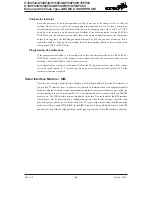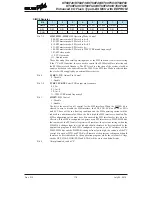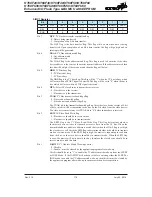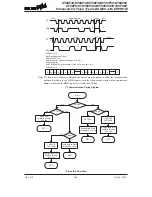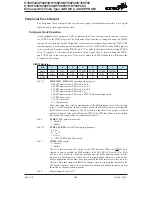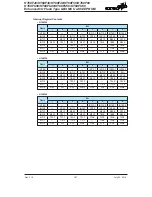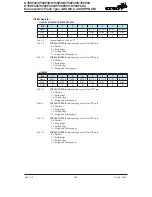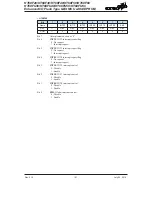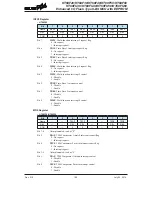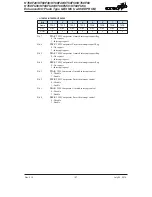
Rev. 2.10
182
���� 02� 201�
Rev. 2.10
183
���� 02� 201�
HT68F20/HT68F30/HT68F40/HT68F50/HT68F60
HT68FU30/HT68FU40/HT68FU50/HT68FU60
Enhanced I/O Flash Type 8-Bit MCU with EEPROM
HT68F20/HT68F30/HT68F40/HT68F50/HT68F60
HT68FU30/HT68FU40/HT68FU50/HT68FU60
Enhanced I/O Flash Type 8-Bit MCU with EEPROM
I
2
C Bus Read/Write Signal
The SRW bit in the SIMC1 register defines whether the slave device wishes to read data from the
I
2
C bus or write data to the I
2
C bus. The slave device should examine this bit to determine if it is to
be a transmitter or a receiver. If the SRW flag is "1" then this indicates that the master device wishes
to read data from the I
2
C bus, therefore the slave device must be setup to send data to the I
2
C bus
as a transmitter. If the SRW flag is "0" then this indicates that the master wishes to send data to the
I
2
C bus, therefore the slave device must be setup to read data from the I
2
C bus as a receiver. I
2
C Bus
Slave Address Acknowledge Signal After the master has transmitted a calling address, any slave
device on the I
2
C bus, whose own internal address matches the calling address, must generate an
acknowledge signal. The acknowledge signal will inform the master that a slave device has accepted
its calling address. If no acknowledge signal is received by the master then a STOP signal must be
transmitted by the master to end the communication. When the HAAS flag is high, the addresses
have matched and the slave device must check the SRW flag to determine if it is to be a transmitter
or a receiver. If the SRW flag is high, the slave device should be setup to be a transmitter so the HTX
bit in the SIMC1 register should be set to "1". If the SRW flag is low, then the microcontroller slave
device should be setup as a receiver and the HTX bit in the SIMC1 register should be set to "0".
I
2
C Bus Data and Acknowledge Signal
The transmitted data is 8-bit wide and is transmitted after the slave device has acknowledged receipt
of its slave address. The order of serial bit transmission is the MSB first and the LSB last. After
receipt of 8-bit of data, the receiver must transmit an acknowledge signal, level "0", before it can
receive the next data byte. If the slave transmitter does not receive an acknowledge bit signal from
the master receiver, then the slave transmitter will release the SDA line to allow the master to send
a STOP signal to release the I
2
C Bus. The corresponding data will be stored in the SIMD register.
If setup as a transmitter, the slave device must first write the data to be transmitted into the SIMD
register. If setup as a receiver, the slave device must read the transmitted data from the SIMD
register.
When the slave receiver receives the data byte, it must generate an acknowledge bit, known as
TXAK, on the 9th clock. The slave device, which is setup as a transmitter will check the RXAK bit
in the SIMC1 register to determine if it is to send another data byte, if not then it will release the
SDAline and await the receipt of a STOP signal from the master.

